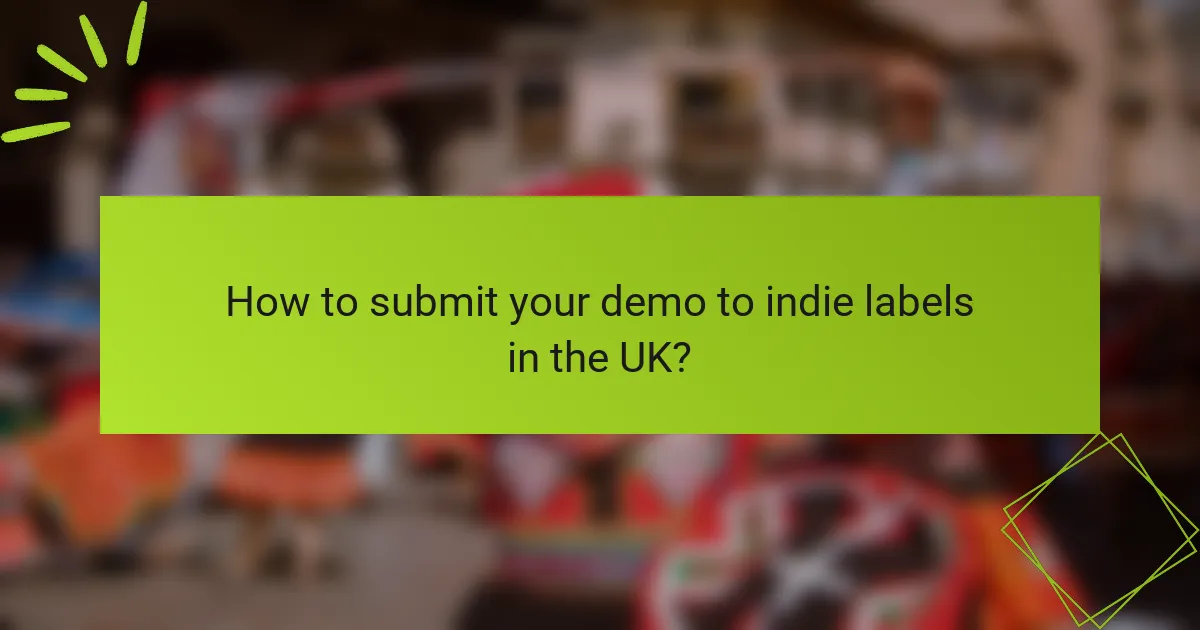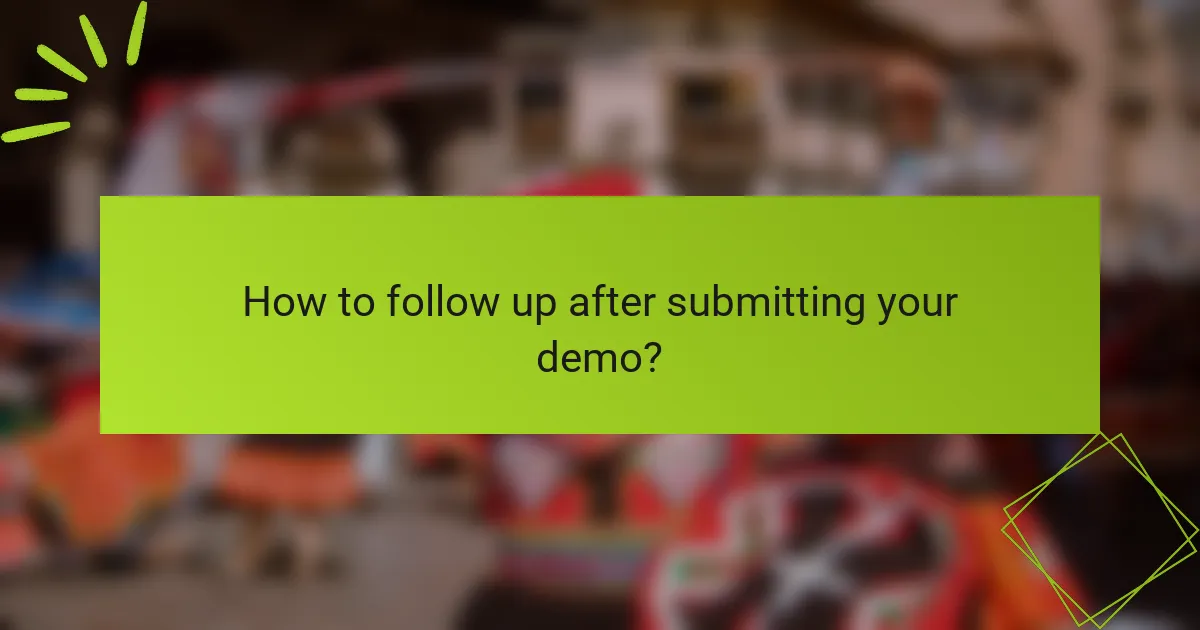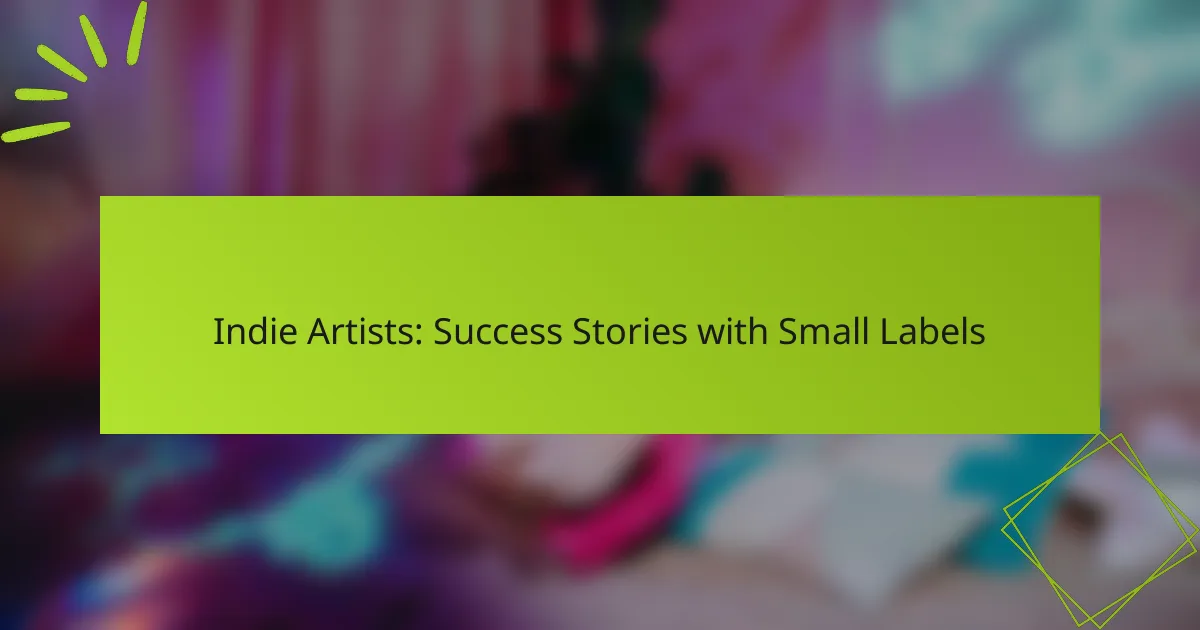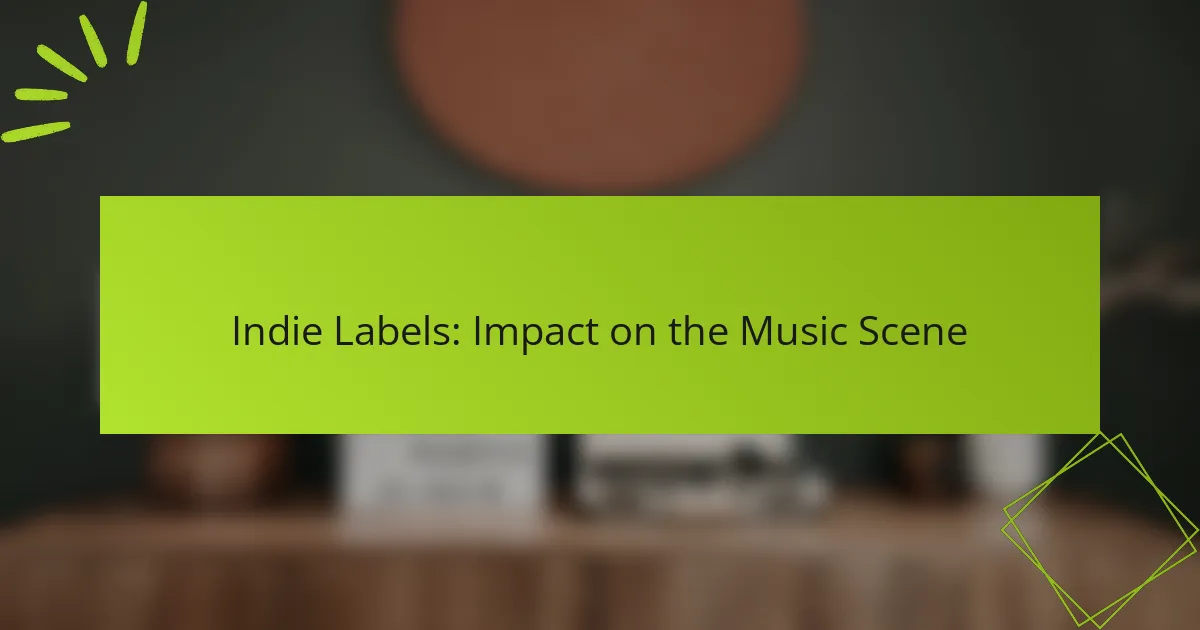Submitting your demo to indie labels requires a strategic approach that emphasizes professionalism and attention to detail. By understanding each label’s specific requirements and crafting a compelling cover letter, you can enhance your chances of making a positive impression. Avoiding common pitfalls, such as neglecting submission guidelines and submitting low-quality recordings, is essential for standing out in a competitive landscape.

How to submit your demo to indie labels in the UK?
Submitting your demo to indie labels in the UK involves understanding the specific requirements of each label and presenting your music professionally. A well-researched approach can significantly increase your chances of getting noticed.
Research target labels
Identifying the right indie labels is crucial for a successful demo submission. Look for labels that align with your genre and artistic vision. Use resources like music blogs, social media, and industry directories to compile a list of potential labels.
Once you have a list, delve deeper into each label’s roster and recent releases. This will help you understand their style and preferences, allowing you to tailor your submission accordingly.
Follow submission guidelines
Each indie label typically has specific submission guidelines that must be followed. These may include preferred formats, required information, and submission methods. Always check the label’s website or contact them directly for the most accurate details.
Common guidelines often specify the number of tracks to include, the length of the demo, and whether to send physical copies or digital links. Adhering to these guidelines shows professionalism and respect for the label’s process.
Use a professional demo format
Your demo should be presented in a polished and professional manner. This includes using high-quality recordings, clear track listings, and concise artist bios. Aim for a demo length of around 15-30 minutes, featuring your best work.
Consider including a cover letter that introduces yourself and explains why you are a good fit for the label. Ensure that all files are labeled correctly and that links to streaming platforms are functional. A well-organized submission can make a strong impression.

What are the best practices for demo submissions?
The best practices for demo submissions include crafting a strong cover letter, providing relevant information, and maintaining conciseness. These elements help ensure that your demo stands out and captures the attention of indie labels.
Craft a compelling cover letter
Your cover letter is your first impression, so make it count. Start with a brief introduction of yourself and your music, followed by why you are interested in that specific label. Personalizing your letter shows that you’ve done your research and are genuinely interested in working with them.
Include a hook that highlights your unique sound or achievements. For example, mention any notable performances, collaborations, or awards that can set you apart from other submissions. A strong cover letter can pique the label’s interest and encourage them to listen to your demo.
Include relevant information
When submitting your demo, provide essential details that help the label understand your music and background. This includes your contact information, social media links, and a brief biography outlining your musical journey and influences. Make sure to highlight any previous releases or notable projects.
Additionally, consider including a tracklist if you are submitting multiple songs. This helps the label navigate your submission easily and understand the context of your work. Providing relevant information can make your submission more appealing and professional.
Keep it concise
Labels receive numerous demo submissions, so keeping your materials concise is crucial. Aim for a cover letter that is no longer than one page and a demo that showcases your best work in a short time frame, ideally between 3 to 5 tracks. This allows the label to quickly assess your style without feeling overwhelmed.
Be mindful of the length of your biography and any additional information you include. Stick to the most relevant points that highlight your strengths and achievements. A concise submission respects the label’s time and increases the likelihood of your demo being listened to in full.

What common mistakes should you avoid?
Avoiding common mistakes can significantly improve your chances of getting noticed by indie labels. Key pitfalls include not following submission guidelines, submitting low-quality recordings, and failing to personalize your approach.
Ignoring submission guidelines
Submission guidelines are critical for any demo submission. Labels often provide specific instructions regarding file formats, length, and additional materials, such as a bio or cover letter. Ignoring these can lead to automatic disqualification.
To ensure compliance, carefully read the guidelines for each label before submitting. Create a checklist to confirm that you meet all requirements, which can help streamline your submission process.
Submitting low-quality recordings
Quality matters when it comes to your demo recordings. Submitting low-quality audio can distract from your talent and make it difficult for label representatives to appreciate your music. Aim for recordings that are clear and professionally mixed.
Consider investing in basic recording equipment or using a reputable studio. A well-produced demo can significantly enhance your chances of making a positive impression, so prioritize audio quality in your submissions.
Failing to personalize your approach
Personalizing your approach can set you apart from other submissions. A generic email or cover letter may suggest a lack of effort or interest in the label. Take the time to research the label’s roster and tailor your message accordingly.
Include specific references to the label’s artists or values in your communication. This shows that you are genuinely interested and have taken the time to understand their brand, which can increase your chances of a favorable response.

What tools can help with demo submissions?
Several tools can streamline the process of submitting your demo to indie labels, enhancing your chances of success. Utilizing platforms for sharing tracks, creating visuals, and managing outreach can significantly improve your presentation and organization.
SoundCloud for sharing tracks
SoundCloud is a popular platform for artists to share their music, making it an excellent choice for demo submissions. You can upload your tracks and easily share links with labels, allowing them to listen without downloading files.
When using SoundCloud, ensure your tracks are properly tagged with relevant genres and descriptions. This helps labels find your music more easily and understand your style at a glance.
Canva for creating visuals
Canva is a user-friendly design tool that can help you create eye-catching visuals for your demo submissions. You can design cover art, promotional graphics, or even a simple one-page press kit to accompany your music.
Focus on maintaining a cohesive brand image in your visuals. Use consistent colors and fonts that reflect your musical style, which can make a strong impression on labels.
Mailchimp for managing outreach
Mailchimp is an effective email marketing tool that can help you manage your outreach to indie labels. It allows you to create professional-looking emails and track engagement metrics, such as open and click rates.
When reaching out, personalize your emails and include links to your SoundCloud tracks and Canva visuals. Avoid sending mass emails without customization, as this can reduce your chances of getting noticed.

How to follow up after submitting your demo?
Following up after submitting your demo is crucial for maintaining communication and demonstrating your interest. A well-timed and respectful follow-up can help you stand out in a competitive landscape.
Wait an appropriate amount of time
After submitting your demo, it’s essential to wait a reasonable period before following up. Generally, waiting two to four weeks is advisable, as this gives the label time to review submissions without feeling rushed.
Consider the specific label’s typical response time, which can vary. Some indie labels may take longer, especially if they receive a high volume of demos, so patience is key.
Send a polite follow-up email
Your follow-up email should be concise and courteous. Start by expressing gratitude for their consideration and briefly reiterate your interest in the label.
For example, you might say, “I hope this message finds you well. I wanted to follow up regarding my demo submitted on [date] and see if there are any updates.” This approach keeps the communication professional and respectful.
Be prepared for feedback
When you receive feedback, whether positive or negative, be ready to respond constructively. Positive feedback may lead to further discussions, while negative feedback can provide valuable insights for improvement.
Consider any suggestions seriously, as they can help you refine your sound or presentation for future submissions. Always thank the label for their feedback, regardless of the outcome, as this fosters goodwill for potential future opportunities.

What are the trends in indie label demo submissions?
Current trends in indie label demo submissions highlight a shift towards digital platforms, an emphasis on social media presence, and a focus on unique branding. These factors are increasingly important for artists looking to get noticed in a competitive market.
Increased use of digital platforms
Indie labels are increasingly relying on digital platforms for demo submissions, moving away from traditional physical formats. Artists are encouraged to use services like SoundCloud, Bandcamp, and Dropbox to share their music, which allows for easier access and distribution.
When submitting demos digitally, ensure that your files are high-quality and properly labeled. Consider including a short bio and links to your social media profiles to provide context and enhance your submission.
Focus on social media presence
A strong social media presence is crucial for artists aiming to attract indie labels. Labels often review an artist’s engagement and follower count on platforms like Instagram, TikTok, and Twitter as indicators of potential success.
To improve your social media impact, regularly post updates about your music, engage with fans, and collaborate with other artists. Authenticity and consistency can significantly enhance your visibility and appeal to labels.
Emphasis on unique branding
Unique branding has become essential for artists seeking to stand out in the indie music scene. This includes developing a distinctive visual style, a cohesive message, and a memorable artist persona that resonates with your target audience.
Consider creating a professional logo, a consistent color scheme for your promotional materials, and a clear narrative about your music. This branding should be reflected across all platforms, from your website to your social media profiles, to create a unified image that attracts labels.



